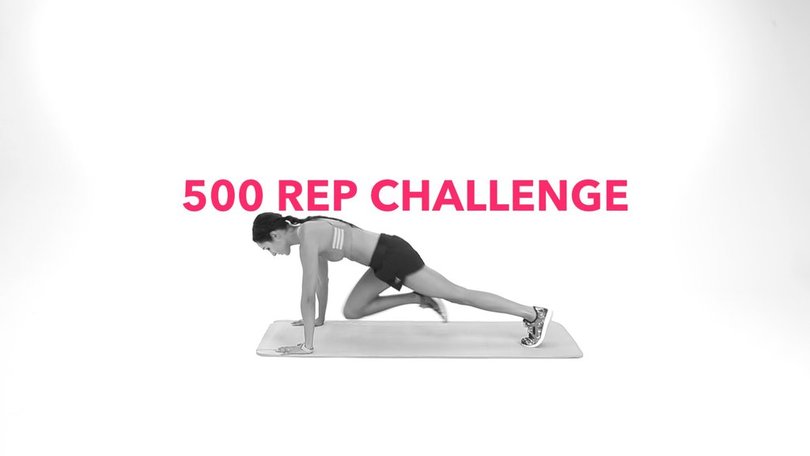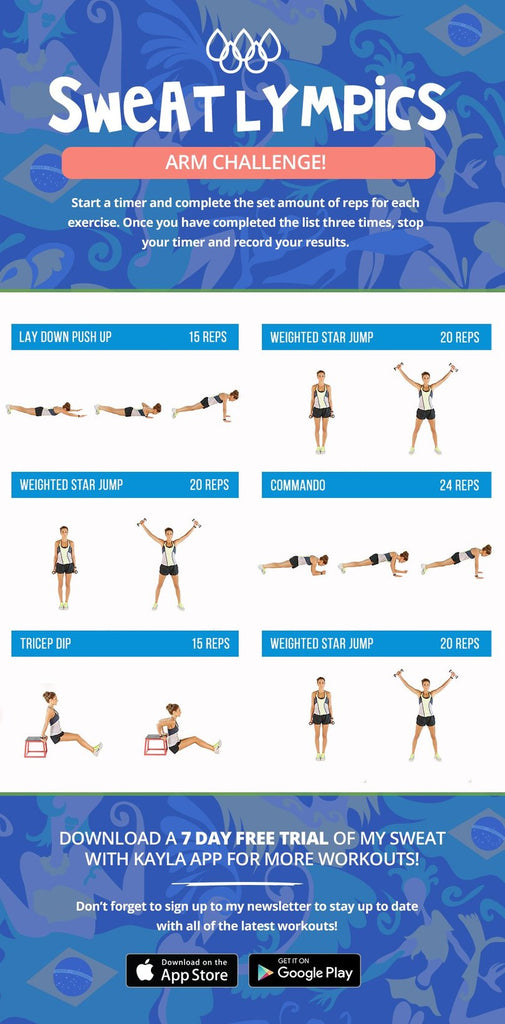How To Activate Your Glutes Before A Workout


Did you know that the glutes are the largest muscle group in the body? By switching on this powerful, multi-layer muscle group you can increase the effectiveness of your leg workouts!
The glutes are essential in holding your body upright and helping you to move throughout the day.
For those working in an office, it’s highly likely that you also sit for a lot of the day. When you’re sitting, the glutes ‘go to sleep’, and this means that it’s so important to activate them before doing glute exercises at home or the gym.
Find out:
Where are the glute muscles?
The glute muscles form the shape of the buttocks. There are three major glute muscles and six deep muscles that help to support and stabilise the hip joint.
When we work out, we focus on the three upper layers of muscle — the gluteus medius, gluteus maximus and gluteus minimus.
These muscles are used to move the thigh forward, back, or in rotation. You use them when you walk, climb stairs, run or do anything else with your legs!
What is glute activation?
Glute activation is a series of warm up exercises that you can do before beginning leg exercises to ‘switch on’ the muscles you intend to recruit during your workout.
Using your body weight or resistance bands, you spark the mind-muscle connection. This encourages activation of the correct muscle groups.
Why is glute activation so important?
If you don’t activate your glutes before a workout, your glutes might not fire up correctly after being dormant for most of the day. When this happens, your body might use a more dominant muscle to execute the movement.
In the long term, if these incorrect muscle activation patterns continue it can lead to muscle imbalances or injury.
Weak glutes can also contribute to poor posture, trouble with balance and lower back pain.
Even if you exercise regularly, glute activation is still so important! When you spend time sitting in the car, at work, or at home, these muscles need to be fired up before they will work effectively.
How do I activate my glutes?
Glute activation exercises like clams, lateral band walking and glute bridges can help to isolate and activate the glute muscles in preparation for a workout.
Foam rolling the glutes and hip area before starting your workout can help to promote blood flow to the area and break up adhesions between muscle and fascia, so the glutes can optimally contract and relax through their normal range of motion.
How do I know if my glutes are activated?
If your glutes are activated, you should be able to feel that they are contracting.
When you start doing gym-based glute exercises like squats you may feel more of the load being carried by your quads, hamstrings or lower back.
When your glutes are active, you should feel them working during deadlifts, step-ups or squats, along with the hamstrings and quads. If you can only feel the hamstrings or quads, activating the glutes during your warm up will help to balance out muscle recruitment for a given exercise.
Exercises to activate the glutes
Use these exercises to fire up your glutes and get a more effective leg workout!
Foam rolling
Foam rolling, or ‘self myo-fascial release’, can improve muscle performance and flexibility. It’s been shown that foam rolling before exercise may improve your workout!
- Position the foam roller horizontally behind you. Carefully sit on top of the foam roller and place both hands on the floor behind you.
- Lift and turn out your right leg so that your ankle is resting on your left leg just above your knee, as shown. Gently tilt your hips to the right to allow the foam roller to press into your right gluteal.
- Slowly roll the foam roller along the length of your gluteal. Once you reach a point of tenderness (called a trigger point), pause and hold that position for ~ 60 seconds or until the pressure/pain is significantly reduced. You can choose to perform small strokes over the point of tenderness if you would prefer.
Clam
This exercise targets your gluteus medius, the glute muscle at the side of the hip. This muscle helps to stabilise the hip and protect your knees from unnecessary strain.
- Lay on your left side with your arm extended along the mat and your head relaxed on your arm. Bend both knees and draw them forward slightly to bring your feet in line with your glutes, ensuring that your hips are stacked and that you maintain a small gap between your waist and the floor. This is your starting position.
- Keeping your feet together, activate your right glute by elevating your right knee towards the ceiling, ensuring that you maintain the gap between your waist and the floor.
- Lower your right knee to return to the starting position.
- Complete an equal number of repetitions on each side.
Donkey kick
To target the glutes with this exercise, make sure your core is strong and your back is stable. Your spine should be still. If you move your back from side to side you will be working your lower back rather than your glutes.
- Starting on all fours on a yoga mat, ensure that your knees are below your hips and your hands are below your shoulders. Set your spine in a neutral position and draw your shoulder blades down and back.
- Keeping your knee bent, release and elevate your right leg until your thigh is in line with your spine, ensuring that your foot remains flexed.
- Lower your right leg to return to the starting position, but without resting your knee on the mat.
- Complete an equal number of repetitions on each side.
Fire hydrant
This exercise targets the gluteus medius, an important muscle for balance. Having a strong gluteus medius helps to protect you from knee or ankle injuries.
- Starting on all fours on a yoga mat, ensure that your knees are below your hips and your hands are below your shoulders. Set your spine in a neutral position and draw your shoulder blades down and back. This is your starting position.
- While keeping your knee bent, release and elevate your right leg out to the side, ensuring that your hips and shoulders remain parallel to (in line with) the floor.
- Lower your right leg to return to the starting position, but without resting your knee on the mat.
- Complete an equal number of repetitions on each side.
Glute bridge
This exercise can be used for activation or to build strength. Be careful not to lift your hips too high, you want to make sure the glutes are really firing up to raise your hips.
For extra activation, you can loop a resistance band around your thighs, above the knee, to target the gluteus medius.
- Start by lying flat on your back on a yoga mat. Bend your knees and position your feet firmly on the mat, ensuring that they are hip-width apart and your spine is in a neutral position. Allow your arms to rest by your sides on the mat. This is your starting position.
- Press your heels into the mat, activate your glutes and raise your pelvis off the floor until your body forms one straight line from chin to knee, resting on your shoulders.
- Lower your pelvis to return to the starting position.
- Repeat.
Glute kickback
This activation exercise targets the gluteus maximus, gluteus minimus, and your hamstrings. Focus on squeezing your glutes at the top of the movement for maximum activation.
- With a resistance band looped around your lower thighs, start on all fours on a yoga mat. Ensure that your knees are below your hips and your hands are below your shoulders. Set your spine in a neutral position and draw your shoulder blades down and back. This is your starting position.
- Release and extend your right leg backwards and upwards until it is in line with your spine, ensuring that your toes remain pointed.
- Bend your knee and lower your right leg to return to the starting position, but without resting your knee on the mat.
- Complete an equal number of repetitions on each side.
Lateral band walk
This activation helps to stabilise the knees and hips. It’s great to do before a walk (such as LISS) or a run.
- With a resistance band looped just under your knees, plant both feet on the floor hip-width apart. Ensure that your knees remain in line with your toes and stand upright. This is your starting position.
- Keeping your right foot on the floor, step your left foot outwards so that your feet are slightly further than hip-width apart.
- Keeping your left foot on the floor, step your right foot inwards to return to the starting position.
- Complete an equal number of repetitions on each side.
Fire up your glutes with these activation exercises!
Use these exercises to wake up your glutes and increase the amount of work done by the glutes during your workout.
I recommend that you use these glute activations any time you do a leg workout, whether it’s a lower body workout or even if you are just going for a run.
Focus on technique during these exercises, rather than on speed to ensure that the glutes are really switching on.
I hope these exercises help you to get more out of your leg workouts! Remember that it’s also important to stretch your glutes after the workout too.
Have you tried these glute activation exercises? How did it go? Let me know in the comments!




<#= c.user.username #><#= moment(c.created_at * 1000).fromNow() #>
<#= c.html_body #> <# if (c.images) { #>
<# } #>